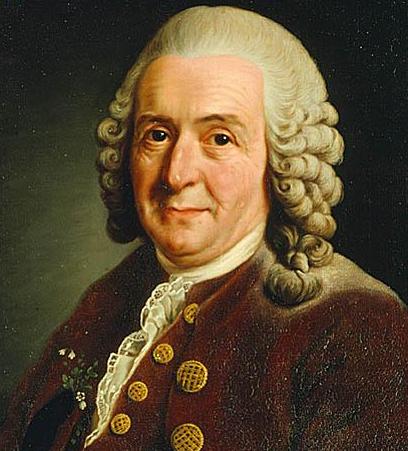 |
| Carl Linnaeus |
Taxonomy: Taxonomy is the discipline of classifying organisms and assigning each know organism on the planet with a universally accepted name. We organize the organisms into groups that are very similar.
Carl Linnaeus: The taxonomic system that we use today was created by Swedish botanist (plant enthusiast) Carl Linnaeus who was born in 1707 and died in 1778. Carl Linnaeus system was based on his belief that the more things the organisms had in common physically the closer they are related to eachother.
 Taxa: The taxa are the categories used to classify the organisms. There are 7 groups in the taxa, they are (in order from most broad to most specific): Kingdom, Phylum, Class, Order, Family, Genus, and Species.
Taxa: The taxa are the categories used to classify the organisms. There are 7 groups in the taxa, they are (in order from most broad to most specific): Kingdom, Phylum, Class, Order, Family, Genus, and Species.- Kingdom: large taxonomic group consisting of closely related phyla
- Phyla: group of closely related classes
- Class: group of similar orders
- Order: group of similar families
- Family: group of genera that shares many characteristics
- Genus: group of closely related species
- Species: a group of similar organisms that can breed and produce fertile offspring
Binomial Nomenclature:
Common Names: common names are the names that people give plants and animals in their language
example: Cat (English), Chat (French), Gato (Spanish)
Universally Accepted Names: universally accepted names are names that scientists give organisms in Latin. These names are created by using the organisms Genus and Species.
- Genus: noun, capitalized first letter, underlined or italicized.
- Species: descriptive, all lower case, underlined or italicized.
example: Felis catus (cat)
No comments:
Post a Comment